‘Planet Earth II’ Heads to the ‘Jungles’: Producers Preview 7 Moments
Week 3 of BBC America’s Planet Earth II takes us to the jungles of the world, which cover less than 6 percent of land but are home to more than half the plants and animals on the planet.
More new species are discovered in the world’s jungles than in any other environment, so it should be no surprise that our exclusive sneak peek above is of a new species — the Araguaia river dolphin in Brazil.
Related: ‘Planet Earth II’ Executive Producer Mike Gunton Previews Top ‘Islands’ Moments
“In 2014, while we were researching for Planet Earth, we came across this paper saying there was a new species of dolphin, which is just incredible. It’s incredible that there can be such a huge animal we don’t know about,” says Dr. Emma Napper, the director and producer of the “Jungles” hour. Most filming expeditions involve working with a scientist and field assistants who spend a lot of time with the animals. Not here. “The problem with filming a new species that nobody knows anything about is that nobody knows anything about them,” she says. “It was a bit of a risk to go and do it just because we didn’t know how many there were. We didn’t know where they might be.”
The crew gave themselves roughly seven weeks in the field to find and film them with only the help of a man who knew how to navigate the flooded forest. “There’s very little dry land, and it’s very, very dense. The dolphins are swimming in this beautiful underwater forest, and we’re picking our way through the treetops on a boat,” Napper says.
As series executive producer Mike Gunton points out, you can only film them topside because the water is so turbid. “They can swim for five, 10 minutes, and then, ‘Where the hell are they?’ To guess where they come up is quite tricky, so they did a great job,” he says.
Related: ‘Planet Earth II’ Producers Preview Must-Watch ‘Mountains’ Moments
Viewers will see in the March 25th “Making Of Planet Earth II” episode how treacherous the rain became at times. What they won’t see is how the crew’s hut became a respite for spiders, mosquitoes, and other animals. “There were lots of unwanted house guests, but I actually quite liked the rat,” Napper says matter-of-factly. “We had a curtain over the door, and she was building a nest in the curtain. So every morning I’d wake up to find another victim’s underwear or knickers or socks with a hole in them, and then the little trail of material, and a beautifully decorated nest that she made for herself.”
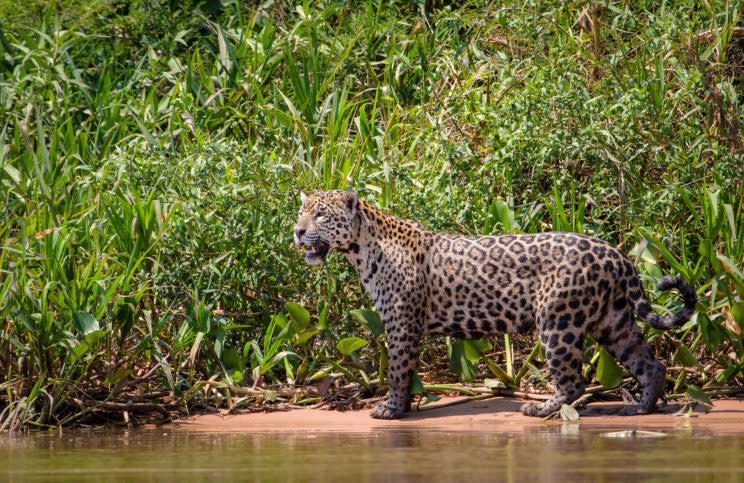
JAGUARS
For Gunton, the standout moment of the “Jungles” hour is another sequence from Brazil — when the crew captured a jaguar hunting a caiman. “Suddenly it leaps behind this bush and there’s this kerfuffle,” he says. “Then out of the water this jaguar drags this massive caiman, bigger than it is. And then this crunching sound as it’s dispatching it… That’s amazing.”
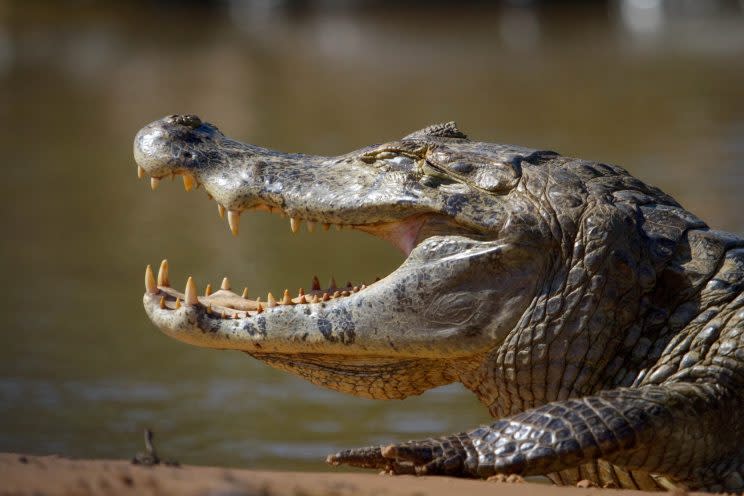
That moment came a month into the crew’s quest to film that particular predator behavior. “We knew this one had gone into hunting mode, although we couldn’t see what he was going for,” Napper says. “Even though you know that’s what those jaguars do, it was absolutely incredible to witness that. Your breath is just taken away, really. You’ve got half your brain going, ‘Goodness me, what an amazing thing to see,’ and the other half just praying that the cameraman pressed record and that it’s all going to be okay.”
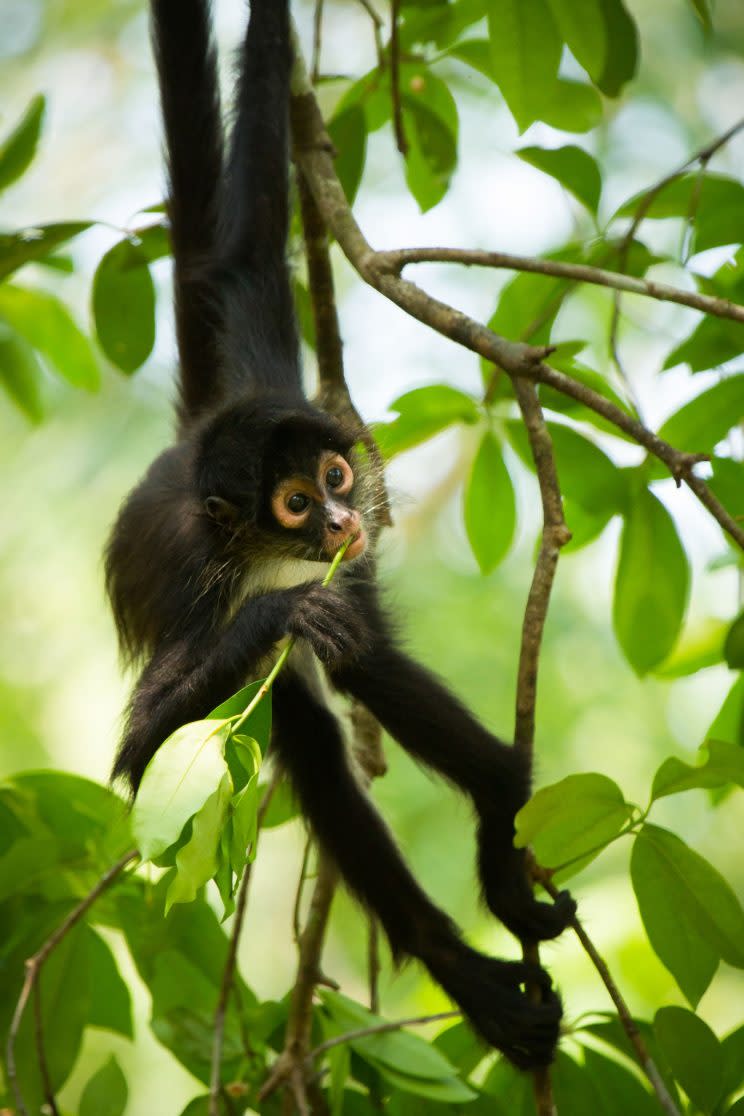
SPIDER MONKEYS
If you think that sequence sounds tense, just wait until you watch a young spider monkey in Guatemala test her tree-climbing abilities while her protective father is momentarily distracted. “We wanted to show the problems of learning to master the jungle when you’re a baby. We spent a little bit of time watching those spider monkeys. Then it became clear that she was the one that was kind of the most naughty,” Napper says. “It was really lovely to see. You can sort of draw parallels with what you might expect with human children — the monkey do have different personalities. Two of them would play fairly safely, but she just kept doing little things that seemed to be getting her in trouble. She kept playing on a slippery tree, which she was just absolutely determined to keep going up, even though she was absolutely terrible at trying to climb it. I guess she wants to push boundaries, that’s how they learn.”
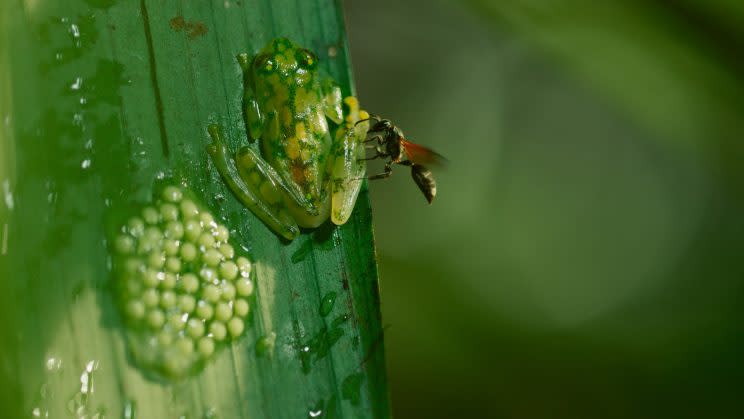
GLASS FROGS
Another dad who turns out to be heroic: the glass frog in Costa Rica that stands guard of all the eggs and does his best to ninja-kick wasps that come to eat them. “What I liked about those sequences is that you expect maybe a jaguar or a monkey to have drama in their lives, but something like that frog — it’s the size of your fingernail. If you were walking through the jungle, you might walk past him or tread on him. You might not even notice him. But despite him being so tiny, he’s got such a dramatic story to tell,” Napper says. “What he’s going through on a daily basis to protect his eggs, his drive to be a good dad is every bit as powerful.”
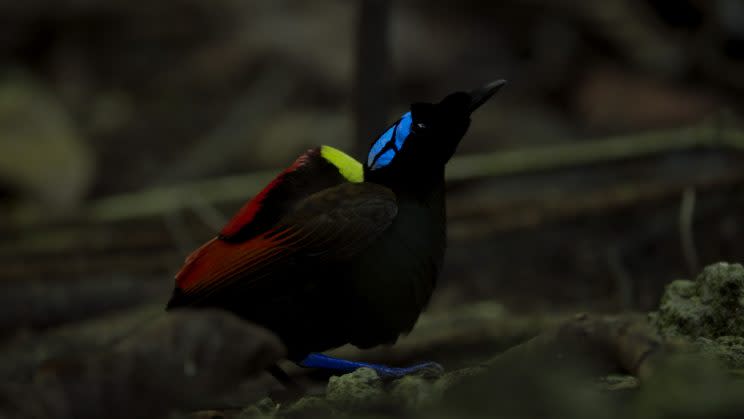
WILSON’S BIRD-OF-PARADISE
Courtship rituals are always fascinating, and Planet Earth II actually helps explains that of the Wilson’s Bird-of-Paradise. “The male clears this little dancing stage in the jungle,” Gunton says. “It clears it around a single thin stem, a little sapling — takes all the leaves off so there are no green leaves anywhere. And then it does this extraordinary dance. Of course, people have observed it in the past from the normal perspective, which is looking at it on its eye-level, and it does all sorts of wonderful displays. You think, ‘Well, why does it do it round this kind of maypole in the middle?’ He only ever does it when the female’s on that pole above him. She’s looking down on him. So hold on a minute. Let’s put a camera where her perspective is. As soon as you do that, it’s completely different. You realize that he’s got this amazing iridescent green ruff that he flips open, which is the brightest green thing in the jungle. And you only see it by looking at it from above where the female sees it, and she will only agree to mate if she sees it from that perspective. By putting the camera there, we were able to reveal that’s what it’s all about. That is beautiful.”
Napper says the team worked with experts from Cornell University whose Birds-of-Paradise Project has been studying courtship behavior for years and had a theory that a new view was needed. “We just decided, why don’t we go out together and try and film some different angles, and see whether it reveals anything or not,” she says. “The scientists saw that for the first time in the field. That was their conclusion, that that display was really meant to be seen looking down, and that explains to them why they’re taking out all the green leaves so that they can stand out.”
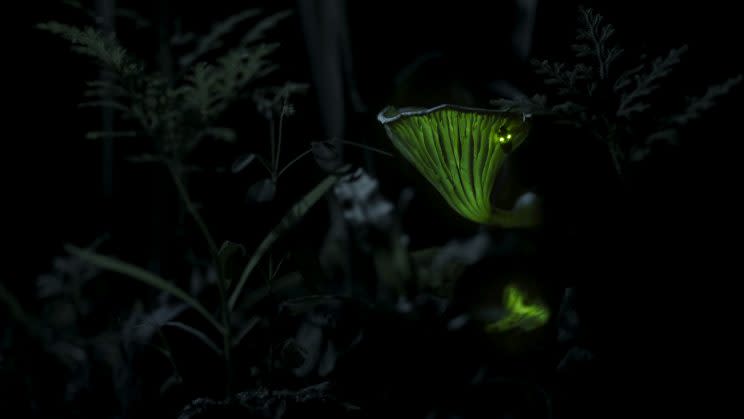
BIOLUMINESCENT FUNGI
Another mystery recently solved: Why do fungi light up in Brazil? Turns out, creatures like the Click beetle above think the light is coming from a potential mate. By the time the beetle gives up the search, it’s covered in spores that are then taken to other parts of the forest.
“We just got these new low light cameras. Filming that before would’ve been pretty difficult,” Napper says. “Wandering around the Brazilian forest in the pitch black is pretty scary. There are big animals there, jaguars and things like that, but it’s not that. One of the most aggressive spiders in the world is there and also some very poisonous snakes — both of which we came across very, very close. The bioluminescence is actually beautiful, quite magical, but you’re kind of terrified at the same time.”
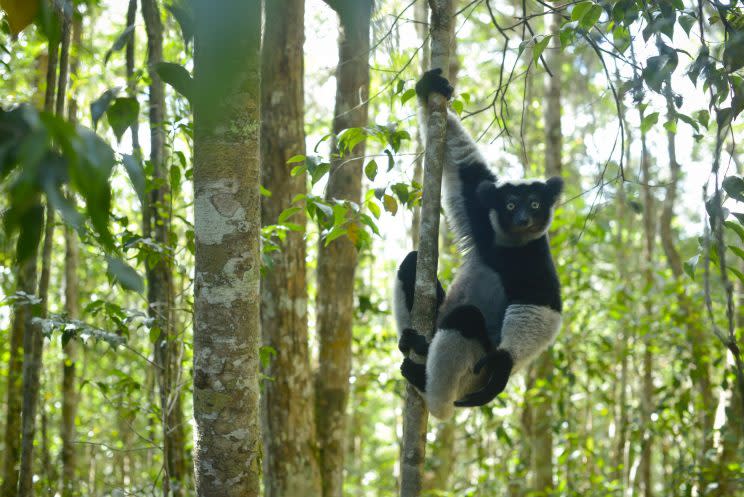
INDRI LEMURS
The “Jungles” episode ends with a poignant segment filmed at a reserve called Mitsinjo in the center of Madagascar. There, a family of endangered indri — which leap through the trees, sometimes as far as 32 feet in a single bound — have been followed by scientists for more than 10 years. One of the indris is named David, after narrator David Attenborough, and surprise, it’s a female. “She was named by the field assistants that follow that family of indri and study them. When she was a baby, they didn’t know whether she was a boy or a girl, but they knew that they liked David Attenborough, so they named her David,” Napper says. “It’s a good name. She suits it. She’s lovely.”
Each morning, the family comes together and sings, which the locals believe is the indris’ reminder to them that their diminishing habitat and numbers are worth saving. “You have to acknowledge the extent to which the forest is being destroyed, and the rate at which the forest there is being destroyed is really sad,” Napper says. “You hope that throughout the program people have enjoyed seeing the jungle, and how varied it is, and how much stuff in there we don’t know about, and how much those kind of stories and those animals can bring you joy and interest. Hopefully people will watch it, enjoy it, and then maybe do something to look after it.”
Planet Earth II airs Saturdays at 9 p.m. on BBC America.
Read More:
Review: ‘FEUD: Bette and Joan’ Cleverly Tackles Sexism and Ageism
‘Meow Madness’: Watch the Promo for Hallmark Channel’s First-Ever Feline Basketball Championship
Freddie Stroma on His New H.G. Wells Drama ‘Time After Time’


